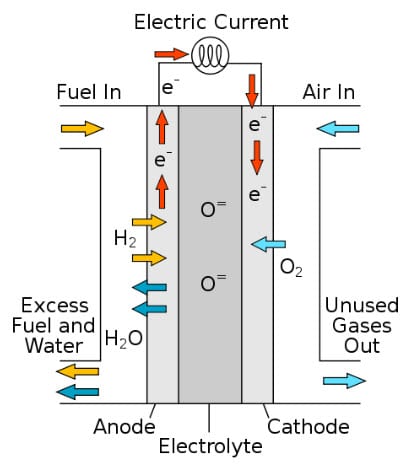
Solid oxide fuel cells may be improved through new microscopy research
August 25, 2012Oak Ridge National Laboratory develops new microscopy technique to discover hidden flaws in fuel cell technology
Solid oxide fuel cells hold a great deal of potential and are gaining ground as a leading source of clean energy for industrial operations. Despite this potential, solid oxide fuel cells, like their cousins, make use of technology that holds minor flaws that have a drastic impact on their performance. Researchers from the U.S. Department of Energy’s Oak Ridge National Laboratory have been examining solid oxide fuel cells, attempting to understand the vacancies that exist within the technology and figure out why oxygen atoms are missing from the positions they should be occupying.
Researchers find vacancies in materials found in solid oxide fuel cells
Microscopy research has allowed scientists from the laboratory to map the vacancies that exist in solid oxide fuel cell technology on an atomic level. Researchers note that these vacancies are linked to the inefficiency of some fuel cell systems and can lead to very short lifetimes for the technology. By mapping these vacancies and understanding them better, researchers suggest they will be able to solve the problems that exist with conventional solid oxide fuel cell technology, making the energy systems more efficient and boosting their longevity.
Overcoming challenges in technology may make solid oxide fuel cells more popular
Solid oxide fuel cells are popular in many industrial sectors because of their ability to reliably produce large amounts of electricity and heat. Like other fuel cells, however, they are exceedingly expensive, keeping them well away from mainstream markets. Flawed technology and the expensive materials used in the manufacture of the energy systems are often cited as the major contributors to the unattractiveness of fuel cells. By understanding the vacancies that exist in fuel cell technology, some of the challenges the energy systems face may be overcome.
New technique may lead to improved fuel cell energy systems
Researchers have made their findings available to the scientific community. Those using the microscopy technique of the Oak Ridge National Laboratory may be able to find ways to improve fuel cell technology, thus making them more efficient, high-performance, and more affordable energy systems. Time will tell whether the technique is able to deliver benefits to scientists, but researchers from the Oak Ridge National Laboratory believe that it will.
Related article(s) and resources:



 HFN News is your leading source for fresh hydrogen and renewable energy updates. Amid the fast-paced growth of hydrogen companies, we provide top-notch news and insights about this exciting sector. Our coverage spans from hydrogen cars to global sustainable initiatives, and we highlight the latest in green jobs and developing hydrogen hubs. We invite you to share your local hydrogen news and explore today’s renewable energy job listings on our site. Thanks for choosing HFN News as your trusted guide to the hydrogen and renewable energy world!
HFN News is your leading source for fresh hydrogen and renewable energy updates. Amid the fast-paced growth of hydrogen companies, we provide top-notch news and insights about this exciting sector. Our coverage spans from hydrogen cars to global sustainable initiatives, and we highlight the latest in green jobs and developing hydrogen hubs. We invite you to share your local hydrogen news and explore today’s renewable energy job listings on our site. Thanks for choosing HFN News as your trusted guide to the hydrogen and renewable energy world!
